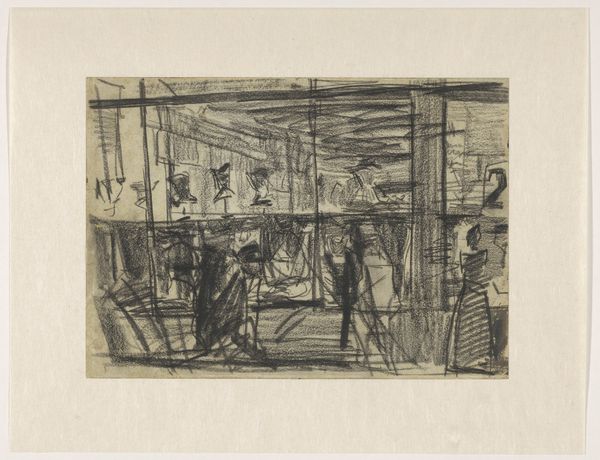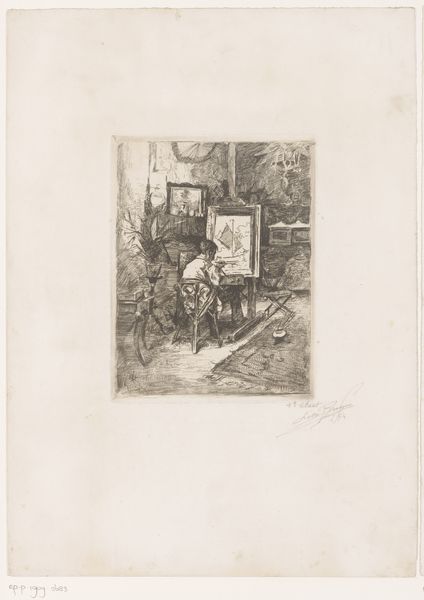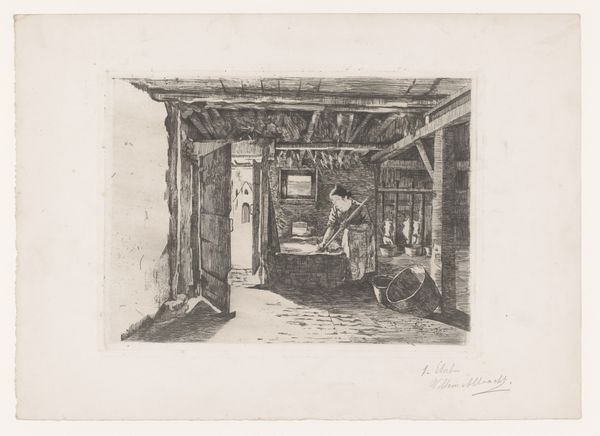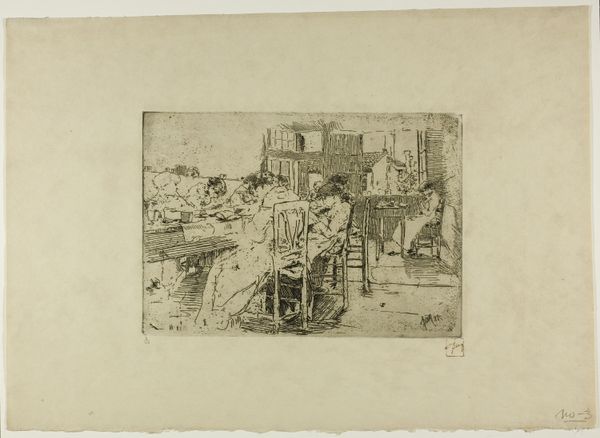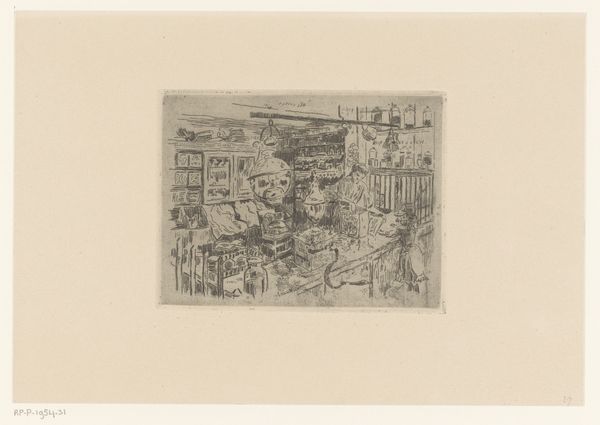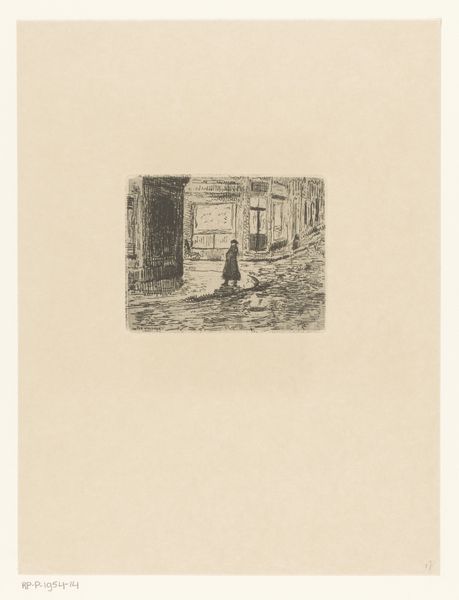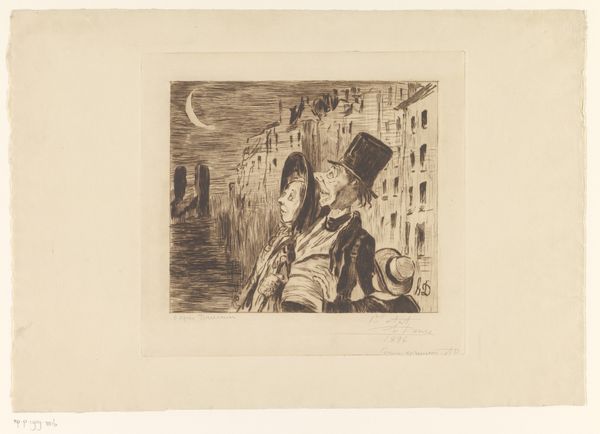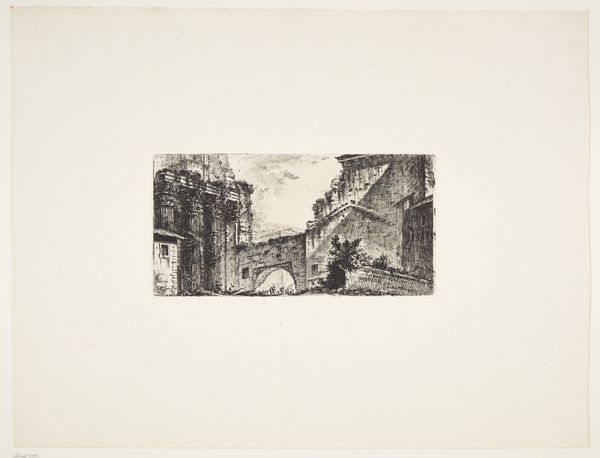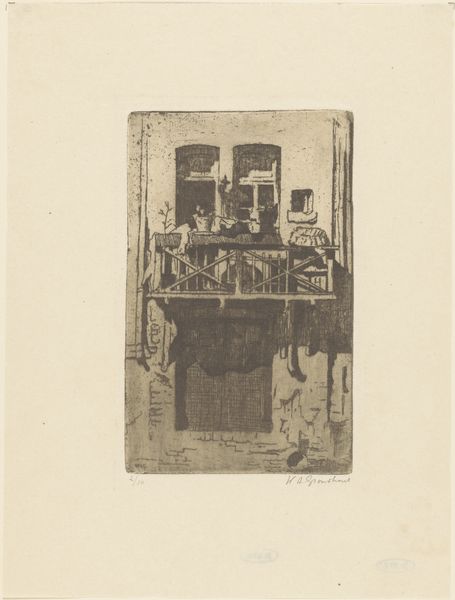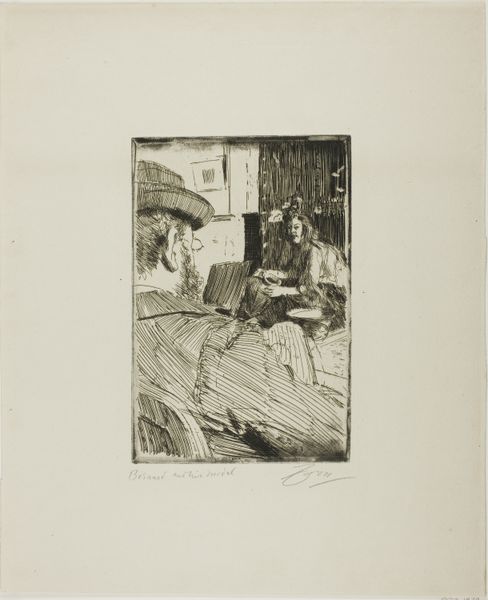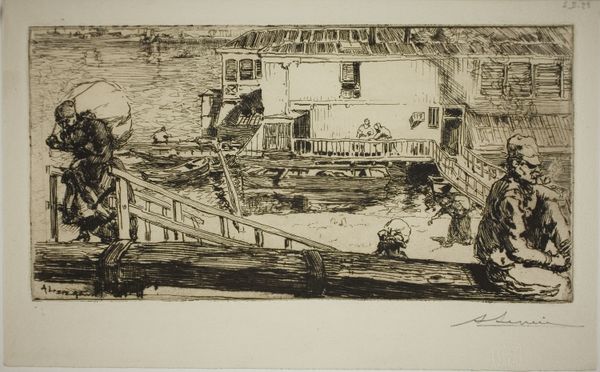
drawing, print, etching
#
drawing
# print
#
etching
#
linocut print
#
ashcan-school
#
cityscape
#
street
#
realism
#
building
Dimensions: plate: 7 x 9 in. (17.8 x 22.9 cm) sheet: 10 x 13 1/4 in. (25.4 x 33.7 cm)
Copyright: Public Domain
Curator: Mortimer Borne’s "West 10th Street," likely created between 1935 and 1943, offers us a gritty glimpse into urban life during the Depression era. The etching is currently held in the Metropolitan Museum of Art. Editor: It’s a bleak scene. The harsh, cross-hatched lines really bring out the dirt and grime of the city. There’s such a strong emphasis on the labor—the men are hunched over their work in the foreground. Curator: Absolutely. Borne was associated with the Ashcan School, which aimed to depict the unvarnished realities of city life, particularly those of the working class. His focus brings attention to the social conditions of the era, shaped by economic hardship. Editor: It's all about the physical realities. The medium itself, etching, is very labor-intensive. Notice the way the artist etches deeply into the metal plate to depict rough textures of the street and the coarse clothing of the workers. The print-making process highlights the tangible, laborious aspects of the image. Curator: The elevated train track looming overhead also contributes to a sense of claustrophobia. The "el" functions as a structural element but, culturally, it symbolized the divide between neighborhoods. The placement reminds us of urban planning’s impacts on communities. Editor: And consider the consumption implied but not stated. We see men constructing something; but for whom? What goods will traverse this repaired or replaced road? It provokes questions about what comes next, what products of labor and industry lie outside of the frame. Curator: A print like this offered wider accessibility than painting, serving a key public function: fostering awareness of everyday realities. It’s an example of art engaged in social commentary, made available to the wider public through printmaking and museum display. Editor: Indeed. Examining the materiality – the ink, the paper, the etching process itself – and focusing on working men pictured shows how art is born from both labor and societal factors. Curator: Examining Borne's print reminds us of art's power to reflect and shape public understanding of historical moments. Editor: Yes, and to connect artistic practice and process with the world of manual work that it seeks to represent.
Comments
No comments
Be the first to comment and join the conversation on the ultimate creative platform.
